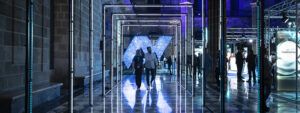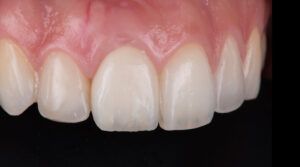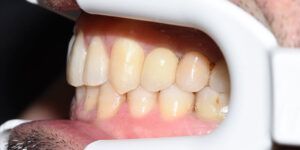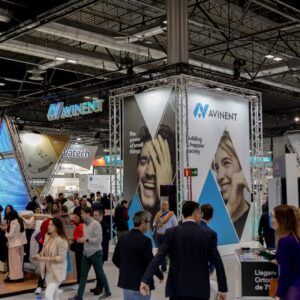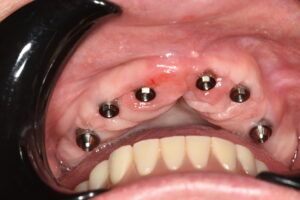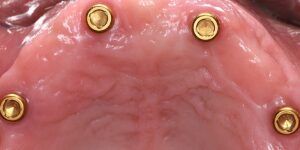Increasing aesthetic demands from patients has enabled dentistry to evolve towards a large variety of treatment alternatives to improve cosmetic dentistry in a way that allows it to be personalised for every patient.
In these cases, one of the main difficulties faced by the clinician is the need to preview the final result, not only from a cosmetic but also a functional standpoint. The design of the smile is the result of a set of procedures that are performed with the aim of showing the patient what the end result of his or her smile will be before starting treatment.
Case representation
Female patient, 55 years of age, non-smoker and without medical history of interest, nor known allergies to medicines, attends the surgery in order to improve her smile.


Diagnosis
The patient had severe wear on the incisal edges of anterior teeth 11, 21 and 22, and lack of dental support structure in the posterior region.
Furthermore, she had the prosthodontic complication of lack of prosthetic space for placing the cosmetic rehabilitation pieces.

Treatment plan
After a thorough clinical and x-ray examination, the following treatment was proposed to the patient:
- Prepare, in a minimally invasive way, the teeth of the upper jaw, returning their position, increasing the vertical dimension of occlusion1.
- Rehabilitation of the upper canine to canine with incisal reduction veneers.
- Replacement of the old restorations on second quadrant implants.
- Placement of implants in the first and fourth quadrant and later restoration.
Procedure
Photographs and a diagnostic model were obtained as the main tools for studying and planning the case. A mock-up was then performed that allowed us to assess the previous design from a cosmetic and functional standpoint, performing the necessary adjustments in terms of shape, size and position directly in the patient’s mouth.



Details and textures were added to this same model, and once the result was achieved, an impression was again taken with the modification that would give the laboratory the information for the final rehabilitation. This tool will greatly facilitate the laboratory’s work, producing a final design copy to make the definitive restorations.

The patient wore this transition mock-up as provisional rehabilitation that helped to confirm the correct design and function. After thirty days wearing the provisional rehabilitation, the minimally invasive preparation of the teeth was performed with the technique described by Galip Gürel2

After completely preparing the teeth, the digital printing was performed using the Trios system from 3Shape, previously scanning the provisional, and the anterior teeth and posterior implants afterwards.

The Gueller-type master models were printed with a 3D printer, where the fitting of the milled feldspar ceramic restorations were verified. This model was chosen as it gave a very natural appearance, had better resistance to wear and fracture than stratified feldspar ceramic, and due to its biocompatibility with the periodontal tissues.

The TriLuxe forte (Vita) ceramic used is a feldspar ceramic with integrated chromatic transition that allows achieving highly aesthetic restorations with better resistance and an exceptional natural appearance.

Clinical result
After cementing the restorations, it was possible to observe the naturalness in the texture, the coloured print and the finish of each veneer, having an excellent cosmetic and functional result.


Conclusion
The treatment performed had not only the aim of considerably improving the patient’s cosmetic appearance, but also ensuring correct occlusion and function of the entire system as a whole and in perfect balance and harmony.
This case was entirely performed using digital flow, allowing for greater patient comfort, a quicker and more effective treatment than if a conventional protocol had been followed, and a reduction in the treatment’s end costs.
Bibliography
1 Fradeani M, Barducci G, Bacherini L, Brennan M. Esthetic rehabilitation of a severely worn dentition with minimally invasive prosthetic procedures (MIPP). Int J Periodontics Restorative Dent. 2012 Apr;32(2):135-47.
2 Gurel G, Morimoto S, Calamita MA, Coachman C, Sesma N. Clinical performance of porcelain laminate veneers: outcomes of the aesthetic pre-evaluative temporary (APT) technique. Int J Periodontics Restorative Dent. 2012 Dec;32(6):625-35.























